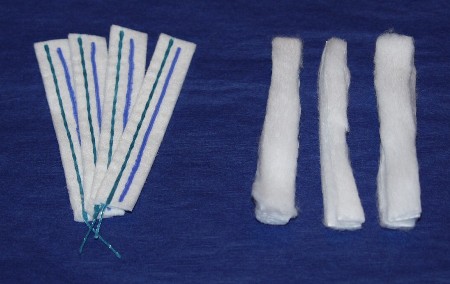Summary
Definition
History and exam
Other diagnostic factors
- bleeding starting at the nares
- recurrent epistaxis
- septal deviation
- tachycardia
- bleeding starting in the throat
- hypotension
- syncope
- dizziness or lightheadedness
- pallor
- hypoesthesia and pain in the distribution of the second branch of the trigeminal nerve
Risk factors
- dry weather and low humidity
- prior nasal or sinus surgery
- nasal cannula oxygen or continuous positive airways pressure (CPAP)
- nasal and other facial fracture
- other nasal trauma
- use of intranasal drug formulations or illicit drugs
- primary coagulopathy (e.g., hemophilia)
- use of certain systemic drugs
- familial hereditary hemorrhagic telangiectasia
- juvenile nasal angiofibroma
- chronic kidney or liver disease
- septal deviation
- nasal foreign body
- environmental irritants
- barotrauma
- ulceration secondary to infection (e.g., herpes zoster, or bacterial infection)
- forceful coughing
- sinonasal neoplasm
- chronic granulomatous disease
Diagnostic tests
Tests to consider
- CBC
- coagulation studies (prothrombin time, activated partial thromboplastin time, platelet function tests)
- BUN, serum creatinine
- LFTs
- nasal endoscopy and nasopharyngoscopy
- autoimmune screen/autoantibodies
- CT scan of paranasal sinuses
- MRI of head
- internal and external carotid angiography
- plain nasal or sinus x-ray
Treatment algorithm
Contributors
Authors
Madeleine R. Schaberg, MD, MPH, FACS
Director of Endoscopic Sinus, Rhinology, and Skullbase Surgery
The New York Eye and Ear Infirmary of Mount Sinai
Department of Otolaryngology, Head and Neck Surgery
Assistant Professor
Icahn School of Medicine at Mount Sinai
New York City
NY
Disclosures
MS declares she has no competing interests.
Acknowledgements
Dr Madeleine R. Schaberg would like to gratefully acknowledge Mr D. Pinder, the previous contributor to this topic. DP declares that he has no competing interests.
Peer reviewers
Nikita Chapurin, MD, MHS
Assistant Professor
Rhinology, Sinus and Skull Base Surgery
Department of Otolaryngology
University of Florida
Gainesville
FL
Disclosures
NC declares that he has no competing interests.
Ethan Cumbler, MD
Assistant Professor
Department of Internal Medicine
University of Colorado Health Sciences Center
Denver
CO
Disclosures
EC declares that he has no competing interests.
Samuel J. Stratton, MD, MPH
Professor
UCLA School of Public Health and David Geffen School of Medicine
Los Angeles
Medical Director
Health Disaster Management/Emergency Medical Services
Orange County Health Care Agency
Santa Ana
CA
Disclosures
SJS declares that he has no competing interests.
Janet Wilson, BSc, MD, FRCSEd, FRCSEng
Professor of Otolaryngology - Head and Neck Surgery
Newcastle University
Honorary Consultant Otolaryngologist
Freeman Hospital
Newcastle-Upon-Tyne
UK
Disclosures
JW declares that she has no competing interests.
Peer reviewer acknowledgements
BMJ Best Practice topics are updated on a rolling basis in line with developments in evidence and guidance. The peer reviewers listed here have reviewed the content at least once during the history of the topic.
Disclosures
Peer reviewer affiliations and disclosures pertain to the time of the review.
References
Key articles
Womack JP, Kropa J, Jimenez Stabile M. Epistaxis: outpatient management. Am Fam Physician. 2018 Aug 15;98(4):240-5.Full text Abstract
Tunkel DE, Anne S, Payne SC, et al. Clinical practice guideline: nosebleed (epistaxis). Otolaryngol Head Neck Surg. 2020 Jan;162(1 suppl):S1-38.Full text Abstract
Seikaly H. Epistaxis. N Engl J Med. 2021 Mar 11;384(10):944-51.
Reference articles
A full list of sources referenced in this topic is available here.
Use of this content is subject to our disclaimer
